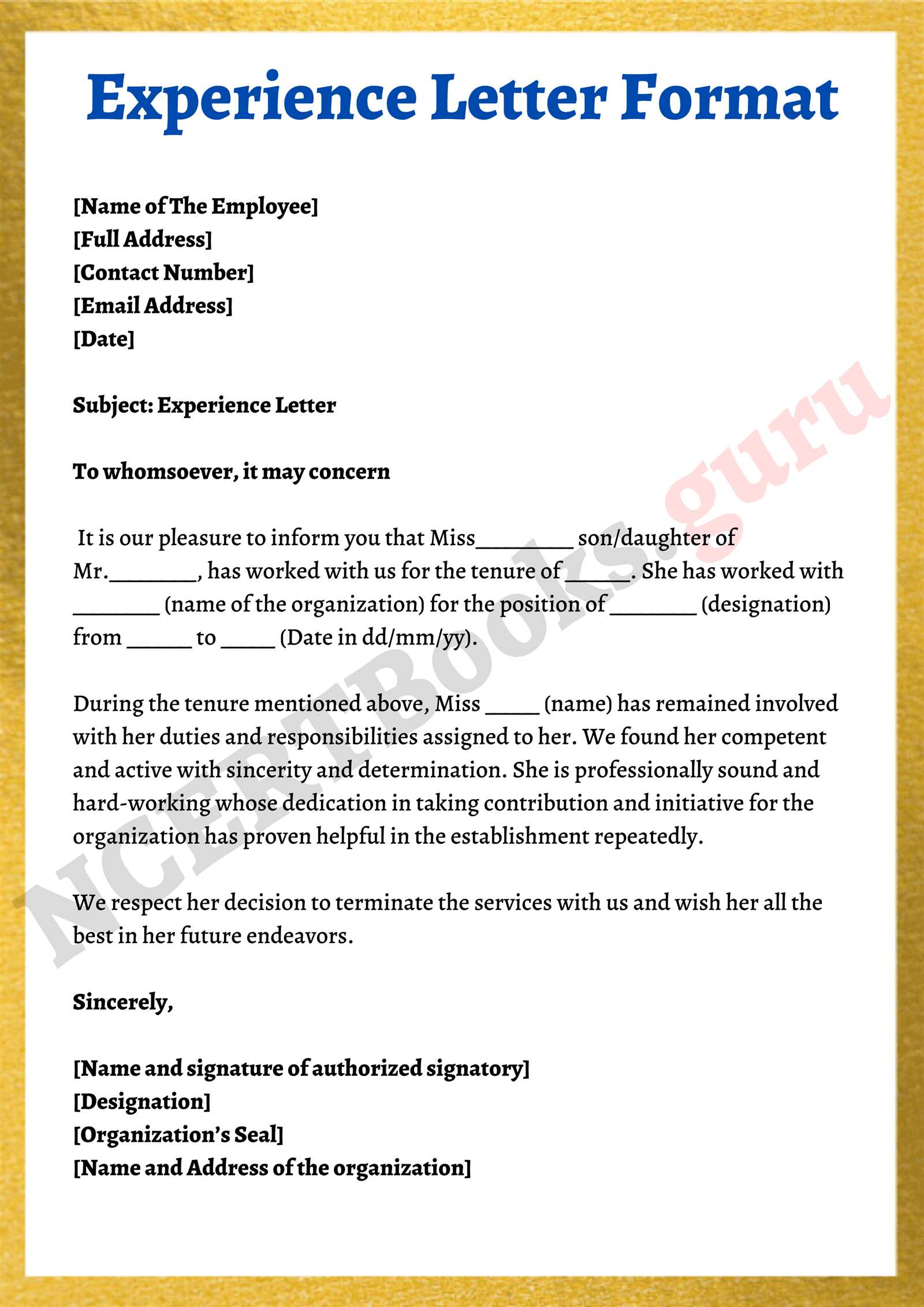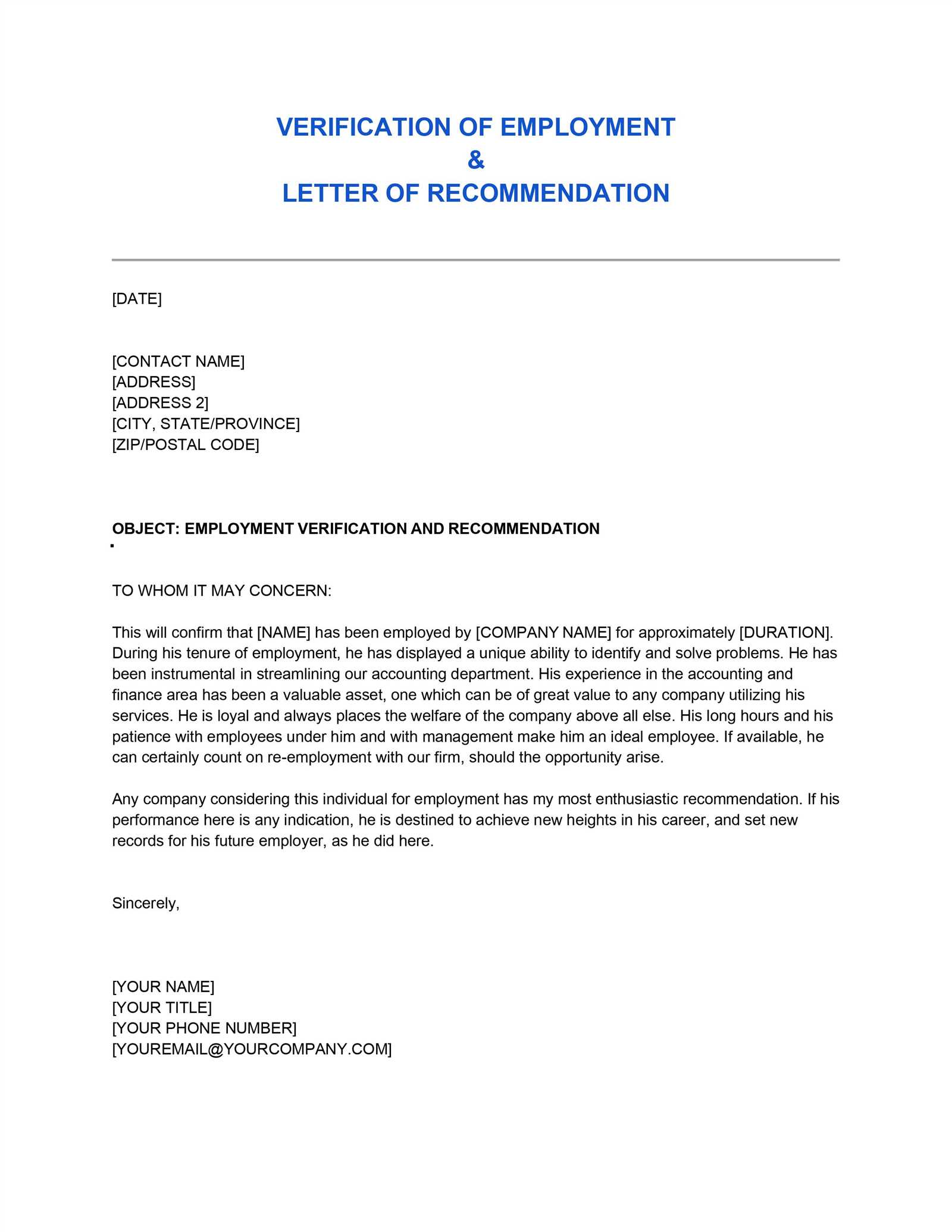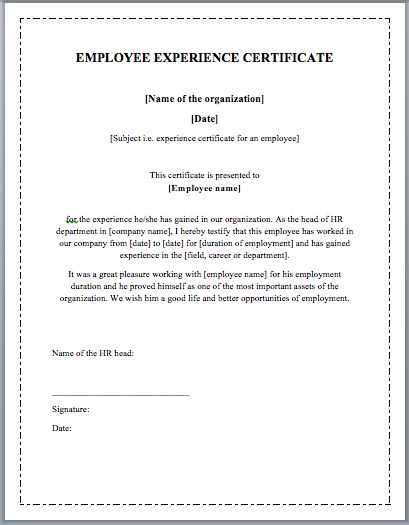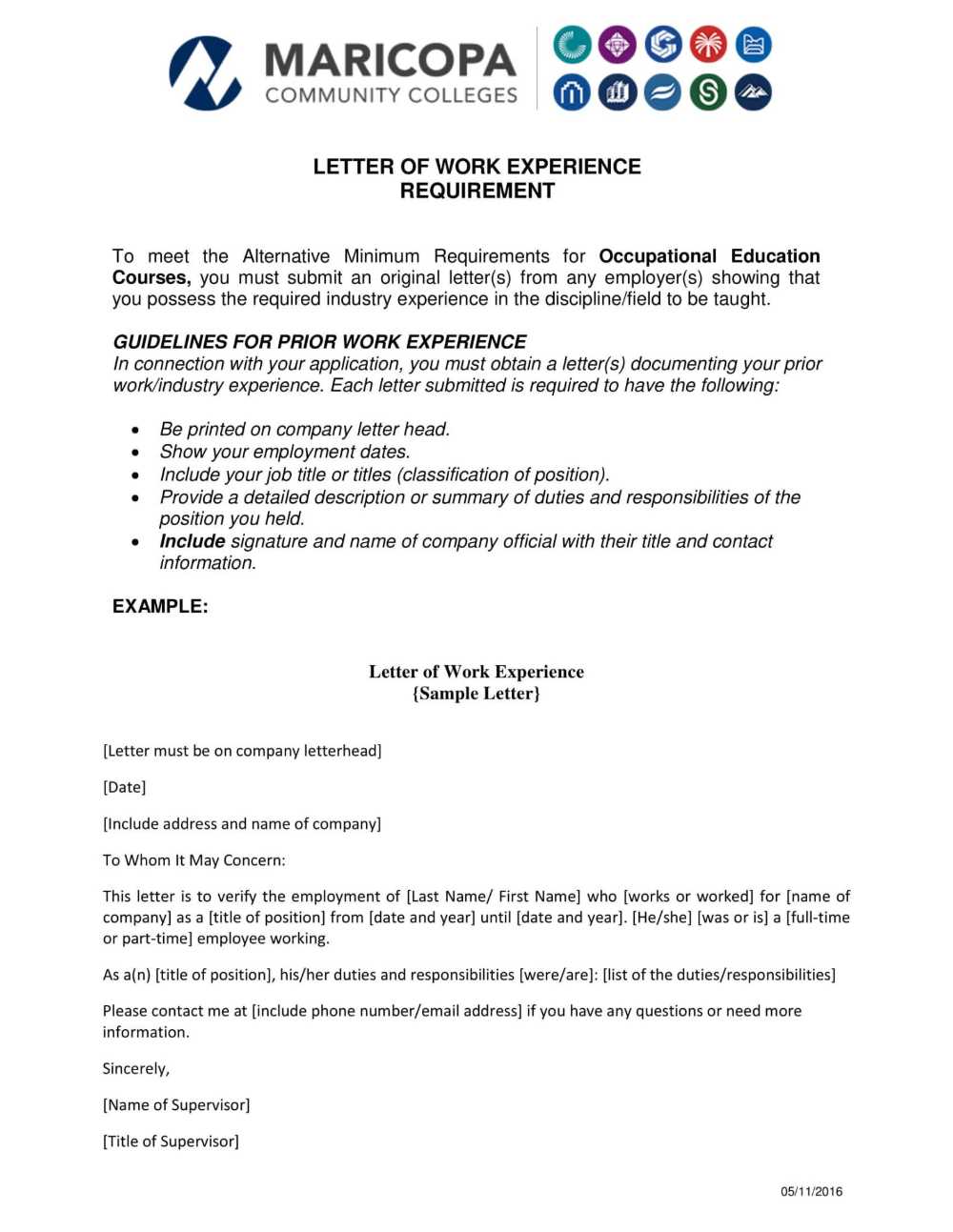Employee Experience Letter Template for Professionals

Providing a formal statement about an individual’s role and contributions within an organization can serve as a vital tool for both current and future professional endeavors. Such documents outline key responsibilities, achievements, and overall performance, offering a clear picture of one’s capabilities. These are often requested by individuals looking to move forward in their careers or apply for new opportunities.
Creating an effective reference requires careful thought and attention to detail. It is essential to include accurate information that highlights skills, accomplishments, and other relevant qualifications. A well-crafted document not only serves as a testament to an individual’s professional background but also enhances their credibility within the industry.
In this section, we will explore the key components of constructing a meaningful and impactful statement, with practical guidance on structuring it to meet professional standards. Whether you are a manager, supervisor, or HR specialist, understanding how to write a precise and professional document is crucial for fostering career growth and creating valuable professional relationships.
Understanding the Purpose of Experience Letters
When individuals move forward in their careers, it is often necessary to provide documentation that reflects their past roles and responsibilities. Such documents serve as formal acknowledgments of the work completed and the skills acquired, showcasing the value a person brought to their previous organization. This type of reference not only verifies employment history but also highlights achievements and professional growth.
For employers, issuing this kind of statement is an important step in maintaining a professional relationship with former staff members. It offers a way to support their transition into new opportunities while maintaining a reputation for fairness and transparency. The process can be beneficial for both parties, with the individual gaining a valuable tool for job searches and the organization demonstrating its commitment to its workforce.
Furthermore, these documents are often used as part of the hiring process for new employers. They give potential recruiters insight into the candidate’s qualifications, work ethic, and fit for a new position. A well-crafted statement can thus be a decisive factor in helping someone secure a new role by providing a comprehensive look at their professional background.
How to Structure an Effective Template
Creating a well-organized document to detail a person’s role and accomplishments requires a thoughtful approach to ensure clarity and completeness. The structure plays a crucial role in conveying relevant information in a clear and professional manner. A well-structured format not only presents the necessary details but also enhances readability, making it easier for recipients to assess the information provided.
The most important aspect of structuring such a document is to include key sections that are both comprehensive and concise. Begin by providing basic details such as the individual’s position, duration of employment, and primary responsibilities. This foundational information sets the context for the reader, offering a snapshot of the person’s time within the organization.
Next, highlight specific achievements or contributions that distinguish the individual’s performance. This could include successful projects, skills developed, or any notable impact made during their tenure. This section should focus on the individual’s strengths and their value to the company, as it helps recruiters or future employers gain a sense of the person’s capabilities.
Finally, ensure the document concludes with a statement of support or recommendation, reinforcing the individual’s qualifications and suitability for future roles. This is often the section that leaves a lasting impression and can be crucial in influencing a decision-maker’s perspective.
Key Elements to Include in the Letter

To create a complete and effective document that outlines an individual’s professional journey, certain crucial details must be incorporated. These components ensure the letter serves its purpose by offering a clear and structured overview of the person’s role and achievements within the organization. Including these essential elements guarantees that the recipient receives a comprehensive understanding of the individual’s contributions and qualifications.
First and foremost, it’s important to clearly state the person’s position and the dates during which they worked with the company. This basic information provides the context necessary to evaluate their tenure. Additionally, a description of their core duties and responsibilities allows the reader to understand the individual’s role within the organization.
Another vital aspect to include is any significant accomplishments or projects that highlight the person’s capabilities and contributions. This helps to paint a more complete picture of the individual’s performance and the impact they had within the company. Any specific achievements that set them apart from others should be emphasized here.
Lastly, a statement of recommendation or endorsement can be highly beneficial. This section serves as a final affirmation of the individual’s qualifications and can be a deciding factor in future opportunities. A thoughtful and positive conclusion reinforces the individual’s professional reputation and supports their next steps in their career.
Customizing for Different Job Roles

When crafting a formal document that highlights an individual’s work within an organization, it’s essential to tailor the content to reflect the specific responsibilities and skills relevant to the person’s role. Customization ensures that the document accurately represents the individual’s unique contributions and showcases their expertise in a way that aligns with the expectations of potential employers or organizations.
Adjusting Content for Varied Positions
For each position, the focus should shift to the particular skills and accomplishments most relevant to that job. For example, for a managerial role, the emphasis might be placed on leadership, team coordination, and project management. On the other hand, for a technical position, highlighting problem-solving abilities, technical proficiency, and successful project completions would be more appropriate. Customizing the content helps ensure that the letter effectively communicates the person’s value for the intended audience.
Incorporating Role-Specific Achievements
Including specific achievements or tasks relevant to the role is crucial in demonstrating the individual’s contributions. For a sales position, you may want to focus on sales targets achieved or customer relationships built. Meanwhile, for a creative position, showcasing projects or innovative solutions developed can be more impactful. Personalizing these achievements enhances the document’s relevance and strengthens the individual’s candidacy for future roles.
Best Practices for Writing a Professional Letter
Creating a well-written document that reflects an individual’s role and accomplishments requires attention to detail, clarity, and professionalism. The tone and structure of the text play an essential part in making a positive impression and ensuring that the message is communicated effectively. Following certain best practices can help you craft a polished and compelling statement that accurately represents the individual’s contributions.
Maintain a Clear and Concise Structure

One of the most important aspects of writing a professional document is ensuring that the information is organized and easy to follow. A clear structure allows the reader to quickly understand the key points and assess the individual’s qualifications. Keep the language simple and direct, avoiding overly complex sentences. Stick to the facts and focus on providing relevant details without unnecessary embellishments.
Use a Formal and Respectful Tone
Adopting a formal tone is critical when writing a professional reference. The language should be respectful, courteous, and free of slang or casual phrasing. This not only reflects professionalism but also ensures that the document is taken seriously. Additionally, using positive and affirming language can help strengthen the individual’s standing while maintaining a tone that is both respectful and encouraging.
Common Mistakes to Avoid in Experience Letters
When preparing a formal document that highlights an individual’s role and contributions, certain mistakes can undermine its effectiveness and credibility. These errors may lead to miscommunication or fail to fully represent the person’s achievements. Understanding and avoiding these common pitfalls ensures that the document serves its intended purpose and leaves a positive impression on the reader.
- Using Vague Language – Ambiguous terms fail to provide the clarity needed to accurately represent an individual’s performance. Be specific about the person’s responsibilities, skills, and accomplishments.
- Overly Casual Tone – A document of this nature should maintain a professional tone. Casual or informal language can diminish the document’s credibility and seriousness.
- Exaggerating Achievements – While it’s important to highlight an individual’s successes, exaggerating accomplishments can lead to unrealistic expectations. Stick to verifiable and truthful statements.
- Leaving Out Key Details – Omitting critical information such as job duties, dates of employment, or specific skills can lead to an incomplete representation of the individual’s career history.
- Failing to Tailor the Content – Using a generic format without adjusting it to reflect the specific role and contributions can make the document feel impersonal and irrelevant.
By avoiding these common mistakes, you can create a more effective and impactful document that properly showcases the individual’s qualifications and contributions.